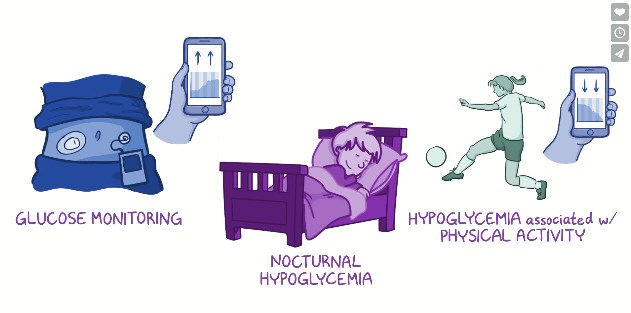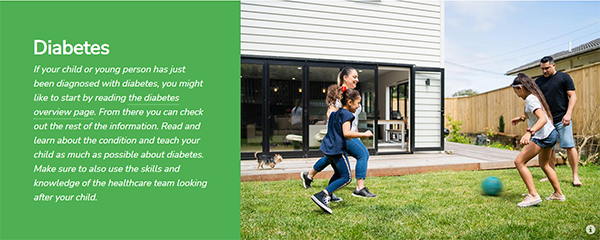How Children With Type 1 Diabetes Can Exercise Safely
How Children With Type 1 Diabetes Can Exercise Safely
Exercise is an important part of managing diabetes. It just needs some planning. Encourage and help your child or young person with diabetes to take part in physical activity.
Key points about exercising safely for children with type 1 diabetes
- exercise is an important part of managing diabetes - it just needs some planning
- children and young people with type 1 diabetes can fully participate in physical education (PE) classes and team sports
- it's important to have good communication between you, your child, the healthcare team and your child's PE teacher or coach
- an insulin plan (specially written for your child) will help to make sure your child has good control of glucose levels during and after exercise
Can my child or teen with type 1 diabetes exercise safely?
Yes. Exercise is an important part of managing diabetes. It just needs some planning. Encourage and help your child or young person with diabetes to take part in physical activity.

Can my young person with type 1 diabetes participate in PE or sports at school?
Yes. Children and young people with type 1 diabetes can fully participate in PE classes and team sports at school.
Good communication is important
It's important to have good communication between your whānau, your child, the healthcare team and your child's PE teacher or coach.
An insulin plan will help control glucose levels
An insulin plan (written for your child) will help your child to have good control of their glucose levels during and after exercise. Anyone supervising your child will need training to recognise and treat low blood glucose levels. Your child should have easy access to blood glucose monitoring equipment and fast-acting carbohydrate food.
Does exercise always lower blood glucose levels?
Usually, aerobic physical activity (such as walking, cycling, and general play) tends to lower blood glucose (BG) levels. Anaerobic physical activity (such as sprinting, hockey, or weightlifting) tends to increase blood glucose levels. Many forms of team and individual sports (such as rugby or netball) and playground activities are a mixture of aerobic and anaerobic activity
Will exercise cause hypoglycaemia?
Children and young people with type 1 diabetes are at risk of having low blood glucose levels (hypoglycaemia). This may happen during and straight after exercise. Or, there may be a delay of several hours so that low blood glucose levels may happen during sleep.
Hypoglycaemia may happen for a number of reasons including:
- increased sensitivity to insulin from exercising
- relatively high levels of insulin in the blood
- a decrease in the response of the hormones which help the body to respond to low blood glucose levels

Can exercise cause high blood glucose levels?
Exercise can also cause high blood glucose levels (hyperglycaemia).
Hyperglycaemia may happen:
- during high-intensity anaerobic exercise like sprinting
- in children and young people who do not have stable glucose levels
- when emotional stress during competitions may trigger high blood glucose levels
What about insulin pumps and exercise?
Your child can (and should) exercise while using a pump.
Talk to your healthcare provider for personal advice about pumps and exercise for your young person. There are many factors that will affect blood glucose levels, including:
- duration and type of exercise
- blood glucose levels before exercise
- blood glucose during and after exercise
- food options before and after exercise
In some sports like swimming, martial arts and some contact sports, pumps are usually removed for the safety of the pump. In most other sports, the pump and site can be secured and left on, so exercise can continue safely.
It is usually a good idea to set a temporary basal rate or temporary target 1 to 2 hours prior to exercise. This will help to prevent low blood glucose levels during exercise. You may need to continue this after exercise, depending on blood glucose levels. You can discuss this with your young person’s diabetes team for more information and advice.
See more KidsHealth content on diabetes
This page last reviewed 01 May 2023.
Do you have any feedback for KidsHealth?
If you have any feedback about the KidsHealth website, or have a suggestion for new content, please get in touch with us.
Email us now
